LE2- LL Blood & Nerve Supply
1/16
There's no tags or description
Looks like no tags are added yet.
Name | Mastery | Learn | Test | Matching | Spaced |
|---|
No study sessions yet.
17 Terms
Popliteal a.
Passes through popliteal fossa to leg; ends at lower border of popliteus muscle by dividing into anterior and posterior tibial arteries
Anterior tibial a.
Passes between tibia and fibula into anterior compartment through gap in superior part of interosseous membrane and descends this membrane between tibialis anterior and extensor digitorum longus
Dorsalis pedis a.
Descends anteromedially to first interosseous space and divides into plantar and arcuate arteries (palpable)
Posterior tibial a.
Passes through posterior compartment of leg and terminates distal to flexor retinaculum by dividing into medial and lateral plantar arteries
Fibular a.
Descends in posterior compartment adjacent to posterior intermuscular septum
Popliteal a.
BS: Superior, middle, and inferior genicular arteries to both lateral and medial aspects of knee
Anterior tibial a.
BS: Anterior compartment of leg
Dorsalis pedis a.
BS: Muscles on dorsum of foot; pierces first dorsal interosseous muscles as deep plantar artery to contribute to formation of plantar arch
Posterior tibial a.
BS: Posterior and lateral compartments of leg; circumflex fibular branch joins anastomoses around knee;
nutrient artery passes to tibia
Fibular a.
BS: Posterior compartment of leg:
perforating branches supply lateral compartment of leg
Iliohypogastric nerve
Superior terminal branch of anterior ramus of spinal nerve L1 Supplies the skin overlying iliac crest, upper inguinal, and hypogastric regions, including the internal oblique and transversus abdominis muscles
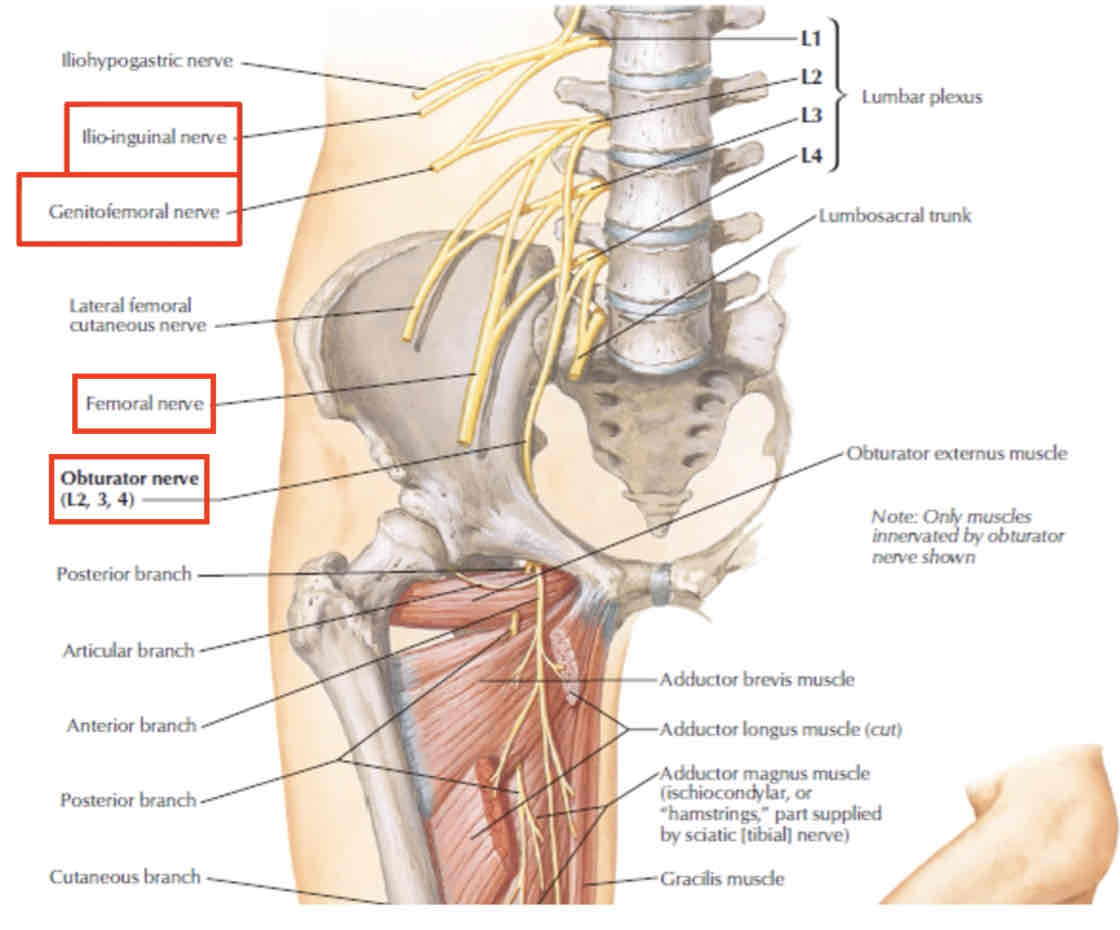
Ilio-inguinal nerve
Inferior terminal branch of anterior ramus of spinal nerve L1
Originates from the superior part of the lumbar plexus
→ Descends around the abdominal wall and the plane between
the transversus abdominis and the internal oblique muscles
→ Passes through the inguinal canal to leave the abdominal wall
through the superficial inguinal ring
→ Its terminal branches innervate the skin on the medial side of
the upper thigh and adjacent parts of the perineum
→ No motor function in the lower limb
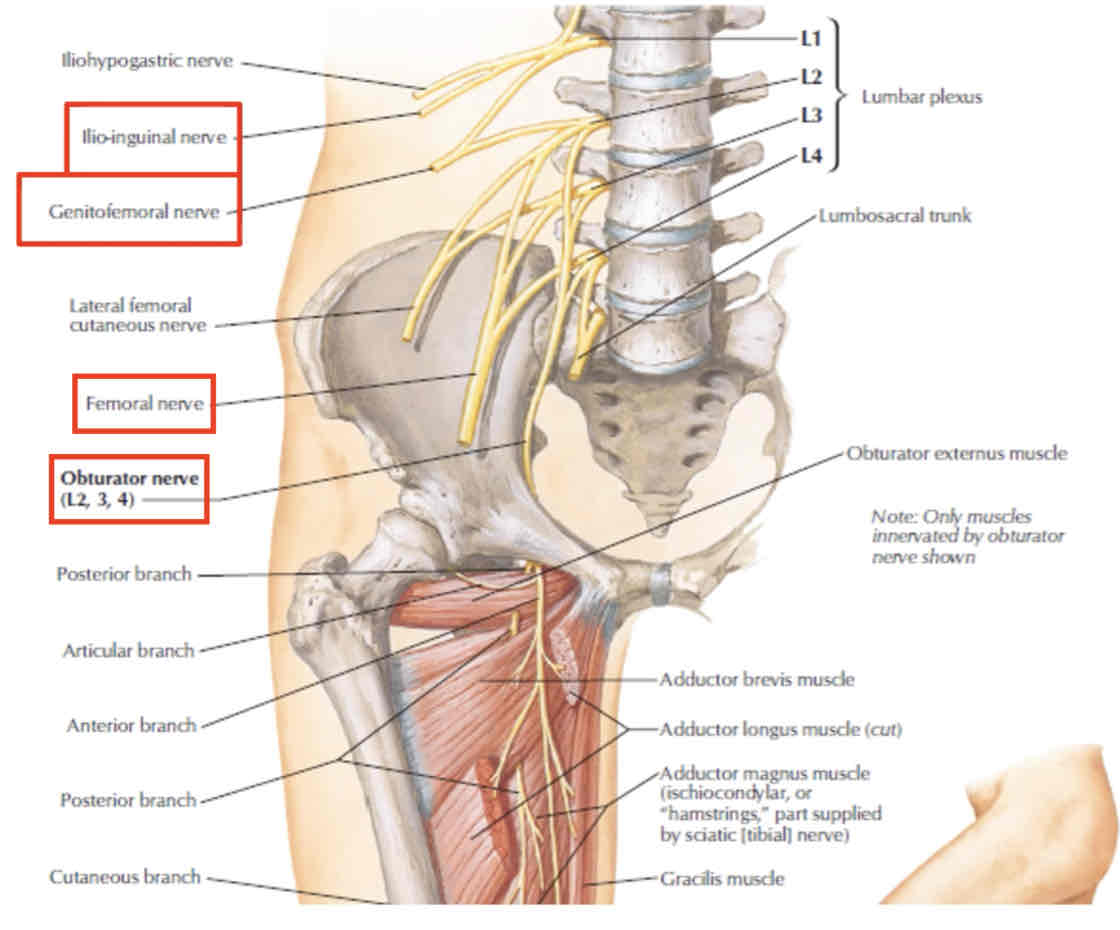
Genitofemoral nerve
passes anteriorly and inferiorly through the psoas major muscle on the posterior abdominal wall descends on the anterior surface of the psoas major
▪ x branch
− innervates the anterior aspects of the perineum
y branch
− passes through the inguinal ligament where it is lateral to the femoral artery
− passes superficially to innervate the skin over the upper central part of the anterior thigh
→ no motor function in the lower limb
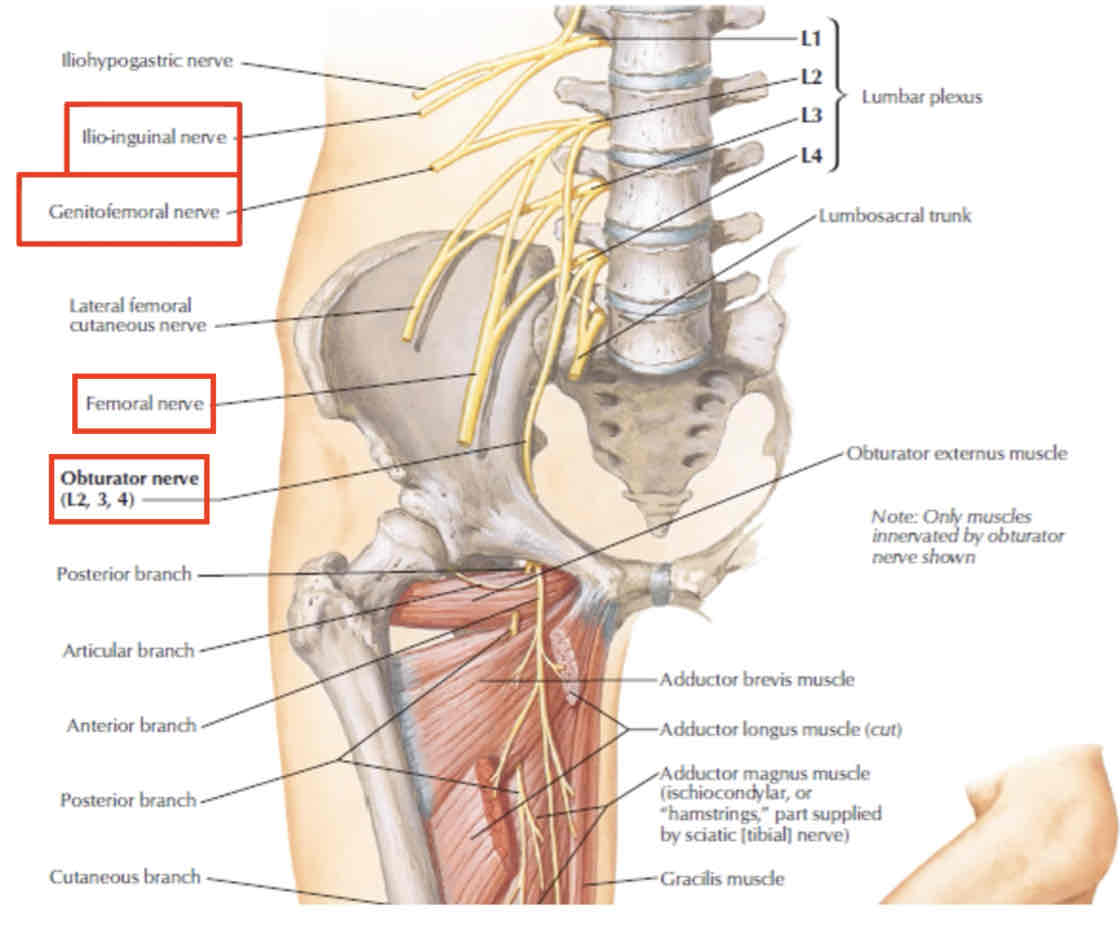
Lateral cutaneous nerve of the thigh
innervates the skin on the lateral side of the thigh
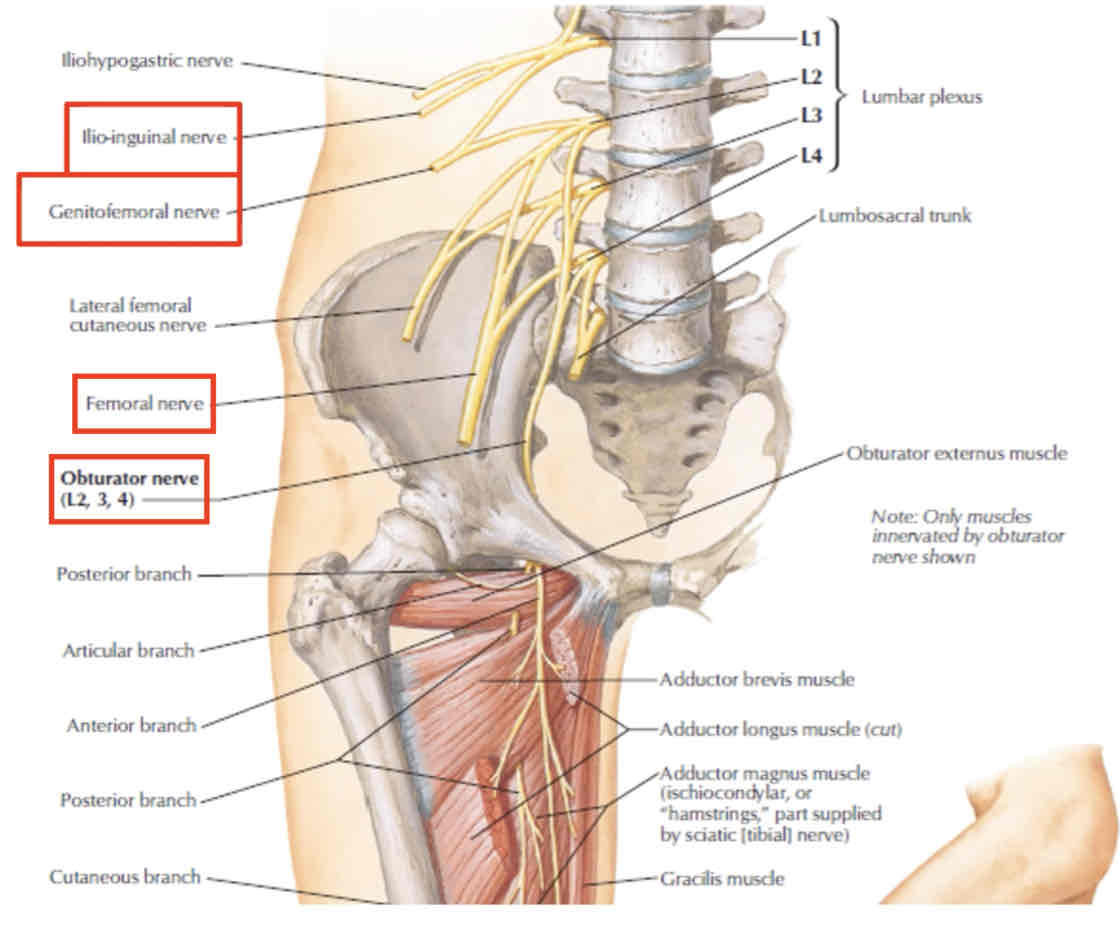
Obturator nerve
enters the thigh by passing through the obturator canal
→ innervates the skin on medial side of thigh and the muscles of medial compartment of thigh (e.g. obturatus externus muscle). Pierces through adductor brevis
▪ except for hamstring part of the adductor magnus, that
originates from the ischium and pectineus muscle innervated by the sciatic nerve
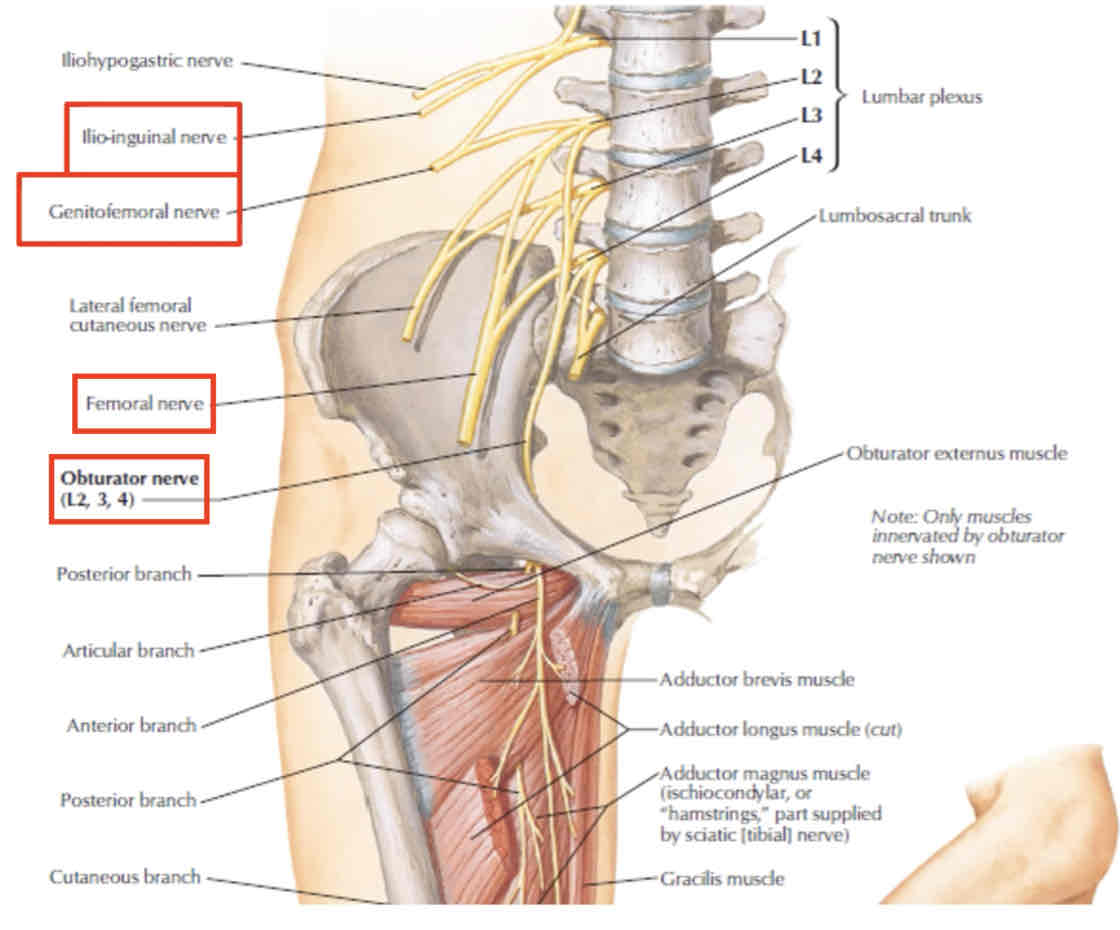
SURAL a.
BS: gastrocnemius, soleus, plantaris ms